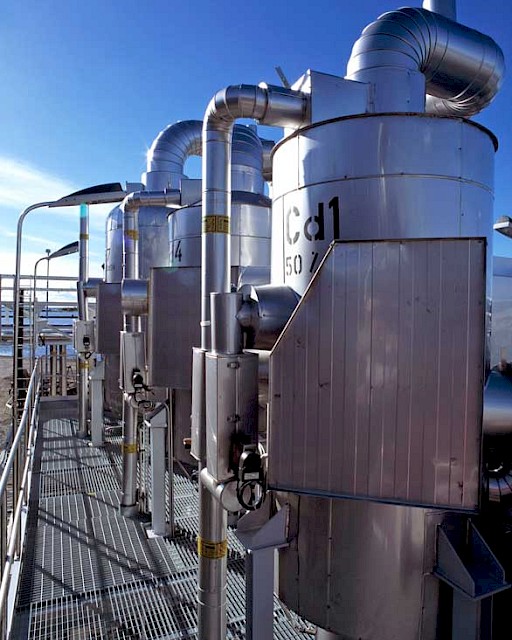Riverine Inputs and Direct Discharges (RID)
The Comprehensive Riverine Inputs and Direct Discharges (RID) programme aims to monitor and assess all inputs and discharges of selected contaminants to the OSPAR maritime area and its regions that are carried via rivers into tidal waters, or are discharged directly into the sea, for example through sewage pipelines or activities like aquaculture inputting substances directly.
The RID programme currently focuses on mandatory monitoring and reporting of the concentrations and loads of the metals cadmium, copper, lead, mercury and zinc, the organic pollutant lindane, nitrogen and phosphorus species and suspended particulate matter. Monitoring of Polycyclic aromatic hydrocarbons (PAHs), mineral oil, polychlorinated biphenyls (PCBs) and other hazardous substances, especially organohalogens, are recommended for voluntary monitoring.
The detailed monitoring commitments of Contracting Parties are set out in the Riverine Inputs and Direct Discharges Monitoring Programme (RID) applicable from 1 January 2015. Monitoring and reporting are co-ordinated through adherence to jointly agreed guidance, including:
- CEMP guidelines for coordinated monitoring for eutrophication, CAMP and RID;
- JAMP Guidelines for the Estimation of Riverine PAH Inputs;
- HARPNUT Guidelines (some of which are under review):
- Guideline 1: Framework and approach of the harmonised quantification and reporting procedures for nutrients;
- Guideline 2: Quantification and reporting of nitrogen and phosphorus discharges/losses from aquaculture plants;
- Guideline 3: Quantification and reporting of nitrogen and phosphorus discharges from industrial plants;
- Guideline 4: Quantification and reporting of nitrogen and phosphorus discharges from waste water treatment plants and sewerage;
- Guideline 5: Quantification and reporting of nitrogen and phosphorus losses from households not connected to public sewerage;
- Guideline 6: Quantification and Reporting of Nitrogen and Phosphorus Losses from Diffuse Anthropogenic Sources and Natural Background Losses;
- Guideline 7: Quantification and reporting of the monitored riverine load of nitrogen and phosphorus, including flow normalisation procedures;
- Guideline 8: Quantification of nitrogen and phosphorus losses from diffuse sources by riverine load apportionment;
- Guideline 9: Quantification and reporting of the retention of nitrogen and phosphorus in river catchments.
All data collected under the RID Programme are collated in the RID database and are assessed on a regular basis at OSPAR level. The data are evaluated and published by OSPAR in annual RID data reports. This follows agreed procedures set out in the Guidance on input trend assessment and the normalisation of loads and agreed statistical methods. The most recent scientific assessment of long-term trends in riverine inputs and direct discharges of hazardous pollutants to the OSPAR Maritime Area is the Riverine Inputs and Direct Discharges to Convention Waters OSPAR Contracting Parties' RID 2018 Data Report.
In 2017 a report ‘Case study on normalisation and trend analyses for OSPAR RID data’ was published. It presents statistical methods for normalisation, trend analysis and breakpoint analysis and illustrates these methods on case studies.

